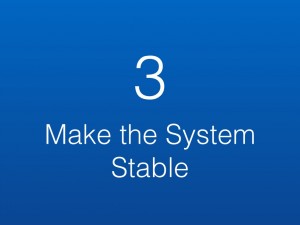Dr. Deming said that the essence of management is prediction. How can we predict what will happen tomorrow?
We have to create stability in our system, and this can only be done by understanding and managing the variation in our processes.
The way to do this is through Statistical Process Control.
Maximum Quality is the result of minimum variation in processes. The processes which make up a system or organization are interdependent. If we do not understand the variation of processes, we cannot know what impact our efforts might have on improving a performance elsewhere. For these reasons the goal of Step Three is to achieve a stable system.
In his constant search for Quality, Deming created a complex and rigorous theory. Applying this theory requires considerable determination and intellectual commitment on our part. In order for this extraordinary theory to yield the benefits we hope for, we need effective tools that can interpret and translate this complexity into something we can use on a practical level. The Theory of Constraints offers these tools.
TOC enables us to interpret situations by analyzing the cause- effect relationships that make up our reality. This analysis is made possible by means of logical tools called the Thinking Processes (TP). The Thinking Processes help us overcome difficult obstacles in the process of change involved in all continuous improvement.
When we use the tools we are able to answer logically and systematically the three questions at the heart of any process of change. What to change? What to change to? How to make the change possible?
Achieving stability, the goal of Step 3, enables us to think about how to improve the system’s performance and increase its Throughput. Our aim is to find a way to get the maximum result from a stable system.





